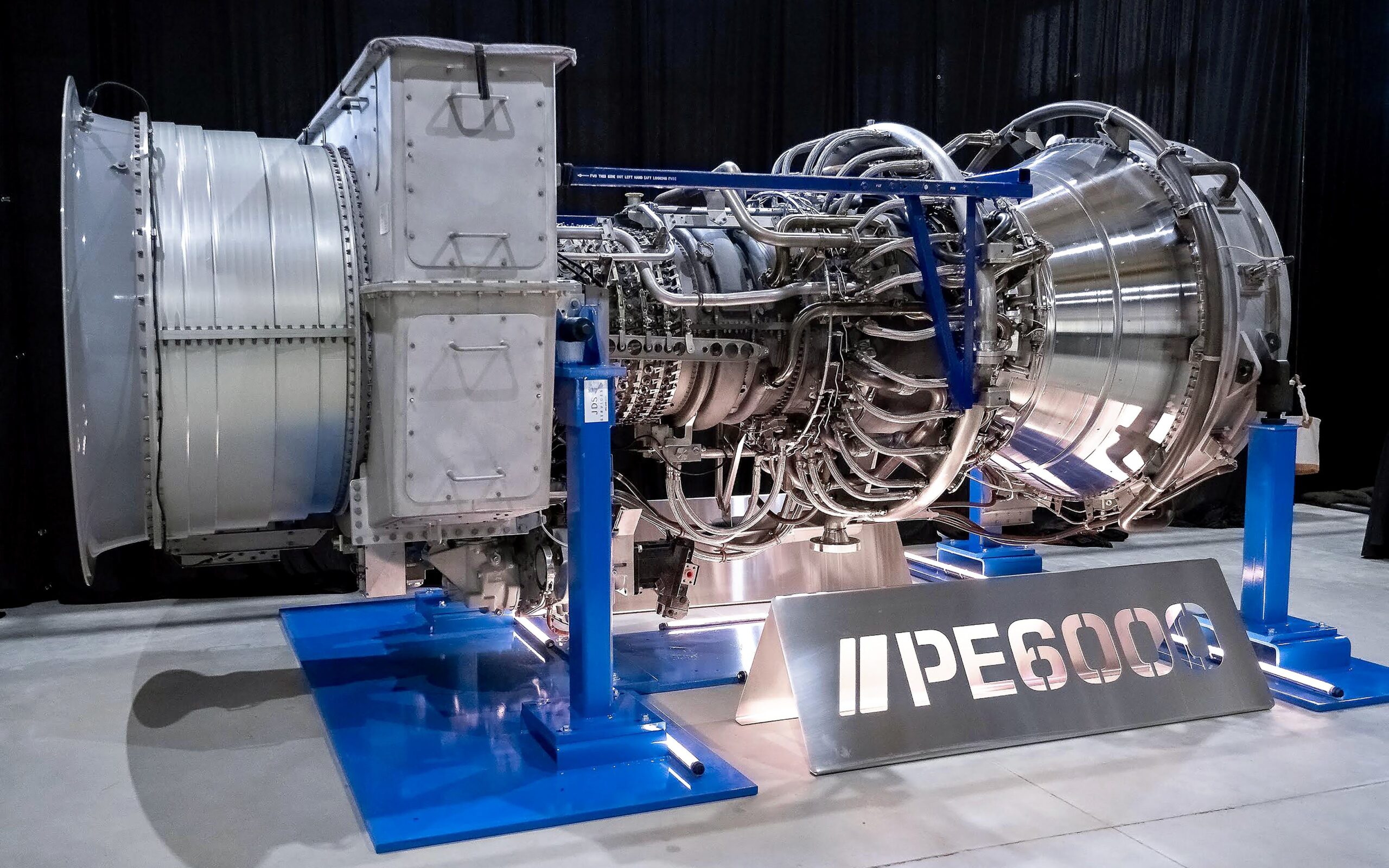Data-center developers are running into a severe power bottleneck as they rush to build bigger facilities to capitalize on generative AI’s potential. Normally, they would power these centers by connecting to the grid or building a power plant onsite. However, they face major delays in either securing gas turbines or in obtaining energy from the grid.
At the Data Center World Power show in San Antonio in October, natural-gas power provider ProEnergy revealed an alternative—repurposed aviation engines. According to Landon Tessmer, vice president of commercial operations at ProEnergy, some data centers are using his company’s PE6000 gas turbines to provide the power needed during the data center’s construction and during its first few years of operation. When grid power is available, these machines either revert to a backup role, supplement the grid, or are sold to the local utility.
“We have sold 21 gas turbines for two data-center projects amounting to more than 1 gigawatt,” says Tessmer. “Both projects are expected to provide bridging power for five to seven years, which is when they expect to have grid interconnection and no longer need permanent behind-the-meter generation.”
[…]
It is a common and long-established practice for gas-turbine original equipment manufacturers (OEMs) like GE Vernova and Siemens Energy to convert a successful aircraft engine for stationary electric-power generation applications. Known as aeroderivative gas turbines[…] “It takes a lot to industrialize an aviation engine and make it generate power,” […] To make it suitable for power generation, it needed an expanded turbine section to convert engine thrust into shaft power, a series of struts and supports to mount it on a concrete deck or steel frame, and new controls. Further modifications typically include the development of fuel nozzles that let the machine run on natural gas rather than aviation fuel, and a combustor that minimizes the emission of nitrogen oxides, a major pollutant.
[…]
ProEnergy buys and overhauls used CF6-80C2 engine cores—the central part of the engine where combustion occurs—and matches them with newly manufactured aeroderivative parts made either by ProEnergy or its partners. After assembly and testing, these refurbished engines are ready for a second life in electric-power generation, where they provide 48 megawatts, enough to power a small-to-medium data center (or a town of perhaps 20,000 to 40,000 households). According to Tessmer, approximately 1,000 of these aircraft engines are expected to be retired over the next decade, so there’s no shortage of them. A large data center may have demand that exceeds 100 MW, and some of the latest data centers being designed for AI are more than 1 GW.
[…]
ProEnergy sells two-turbine blocks with the standard configuration. It consists of gas turbines, generators, and a host of other gear, such as systems to cool the air entering the turbine during hot days as a way to boost performance, selective catalytic reduction systems to reduce emissions, and various electrical systems.
[…]
Source: Why Jet Engines Could Power the AI Data Centers Boom – IEEE Spectrum

Robin Edgar
Organisational Structures | Technology and Science | Military, IT and Lifestyle consultancy | Social, Broadcast & Cross Media | Flying aircraft

